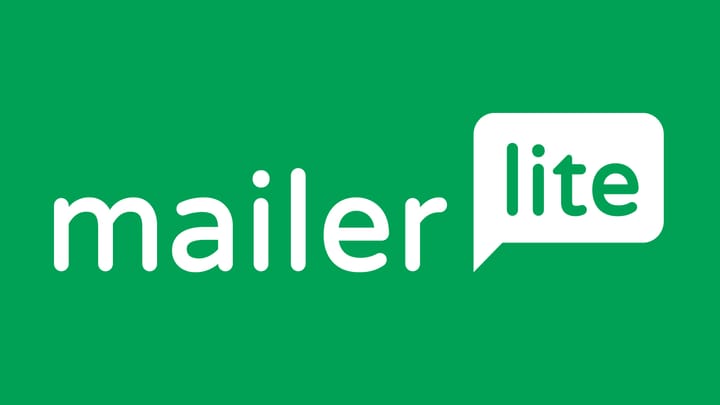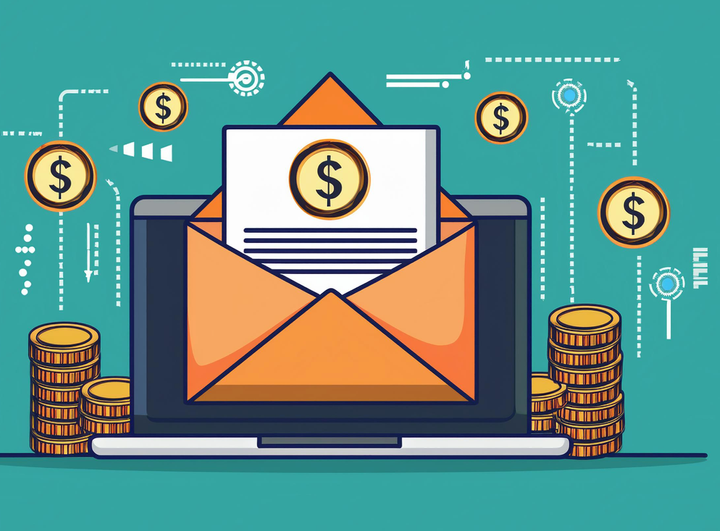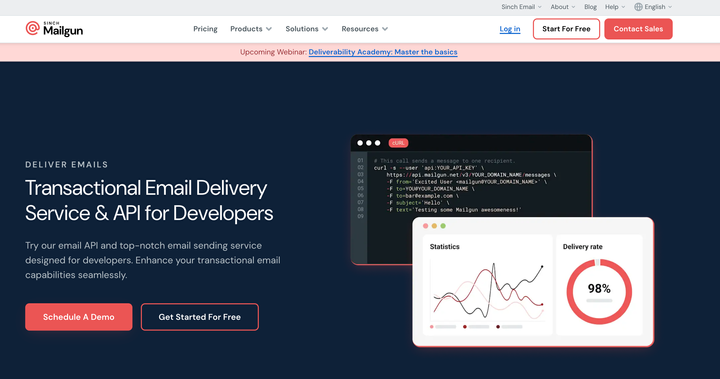The Complete Guide to Email Warm-Up for New Domains
This guide will walk you through everything you need to know about warming up your new domain for email success.

So, you’ve got a new domain and you're ready to start sending emails.
But before you hit "send" on your first big campaign, there’s a crucial process you can't afford to skip: email warm-up.
Jumping the gun without warming up your domain is like trying to run a marathon without any training—you’re setting yourself up for failure.
Skipping this step can lead to your carefully crafted emails landing in the spam folder, damaging your sender reputation before you even get started. This guide will walk you through everything you need to know about warming up your new domain for email success.
What is Email Warm-Up?
Email warm-up is the process of building a positive reputation for a new email domain by gradually increasing the volume of emails you send.
Think of it as introducing yourself to email service providers (ESPs) like Gmail, Outlook, and Yahoo. Instead of showing up unannounced and sending thousands of emails, you start small and prove that you're a legitimate sender, not a spammer.
This process helps you build trust with ESPs. When they see consistent, positive engagement from your domain, they learn to trust your emails and deliver them straight to the inbox.
A proper warm-up is fundamental to achieving good deliverability and establishing a strong sender reputation that will support your email marketing efforts for years to come.
Why is Email Warm-Up Crucial for New Domains?
New domains face a unique challenge: they have no history. From an ESP’s perspective, a new domain sending a high volume of emails looks suspicious. They have no data to prove you’re a credible sender, so their spam filters are on high alert.
Warming up your domain helps you establish this credibility. By starting with a low volume of emails and slowly increasing it, you demonstrate a natural sending pattern. This allows you to build a positive reputation based on recipient engagement, such as opens and clicks.
Consider a small business that launched a new website and immediately sent a promotional email to its entire 10,000-person list. ESPs, seeing this sudden spike from an unknown domain, flagged the emails as spam.
As a result, their open rates were abysmal, and their domain reputation was damaged from day one.
In contrast, a similar business that spent a few weeks warming up its domain saw over 90% of its emails land in the inbox, leading to a successful launch campaign.
How Email Warm-Up Works
The warm-up process is methodical and requires patience. It’s not a race. The goal is to show ESPs that you are a legitimate sender who provides value to recipients.
Here’s a step-by-step breakdown of the process:
- Start with small email volumes. On your first day, you might send just 10-20 emails. The key is to start small to avoid triggering spam filters.
- Gradually increase the number of emails sent daily. You can increase your sending volume by a small percentage each day. For example, if you send 20 emails on day one, you might send 30 on day two, 45 on day three, and so on.
- Focus on engaging with high-quality recipients. Send your initial emails to friends, colleagues, and highly engaged subscribers who are likely to open and interact with your messages. Positive engagement is a powerful signal to ESPs.
- Monitor your metrics. Keep a close eye on your open rates, click-through rates, bounce rates, and spam complaints. These metrics will tell you if your warm-up is on track.
Consistency and patience are your best friends during this phase. A slow, steady ramp-up is far more effective than an aggressive, rushed approach.

Tools and Strategies for Effective Email Warm-Up
You can approach email warm-up in two ways: manually or with an automated tool.
The manual method involves you doing everything yourself, like creating a sending schedule, finding engaged recipients, and sending the emails daily. While cost-effective, it's time-consuming and requires careful management.
Automated warm-up tools, like Maileroo, handle the entire process for you. These platforms automatically send emails from your domain to a network of high-reputation inboxes, generate positive interactions (like opens and replies), and gradually increase the volume. This saves you time and reduces the risk of human error.
Regardless of your chosen method, here are some strategies to help:
- Craft engaging emails: Even warm-up emails should be interesting. Ask questions to encourage replies or share valuable content.
- Personalize your content:Use the recipient's name or other personal details to increase engagement.
- Use clear subject lines:Avoid spammy words and create subject lines that accurately reflect the email's content.
- Consider a dedicated IP address: If you plan to send a large volume of emails (over 50,000 per day), a dedicated IP can give you more control over your sender reputation, which you will also need to warm up.
Common Mistakes to Avoid During Email Warm-Up
A few common missteps can derail your warm-up efforts. Be sure to avoid these pitfalls:
- Sending too many emails too quickly: This is the most common mistake. A sudden spike in volume is a major red flag for ESPs. Stick to a gradual increase.
- Using low-quality or purchased email lists: Purchased lists are often full of inactive or fake email addresses, leading to high bounce rates and spam complaints that will destroy your reputation.
- Ignoring engagement metrics: If you see high bounce rates or low open rates, don't ignore them. Pause your sending, investigate the issue, and resolve it before continuing.
- Failing to authenticate your domain:Before you send a single email, set up your domain authentication records: SPF, DKIM, and DMARC. These records prove to ESPs that your emails are legitimate and haven't been forged.

Monitoring and Adjusting Your Warm-Up Process
Monitoring is not optional; it’s an essential part of the warm-up process. Track key metrics like open rates, spam complaints, and bounce rates daily. Many email platforms provide dashboards to help you see this data easily.
If you notice your emails are landing in spam, don't panic. Here are a few troubleshooting steps:
- Check your domain authentication (SPF, DKIM, DMARC) to ensure it's set up correctly.
- Review your email content for spammy words or formatting.
- Slow down your sending volume for a few days to see if deliverability improves.
Even after the initial warm-up period, ongoing monitoring is crucial for maintaining a healthy sender reputation.
What Happens After the Warm-Up Period?
Once your domain is consistently achieving high deliverability rates with your target sending volume, the initial warm-up is complete. Now you can transition to your regular email campaigns.
However, the work doesn't stop here. To maintain your hard-earned reputation, you should follow email best practices:
- Practice good list hygiene: Regularly clean your email list to remove inactive subscribers and invalid addresses.
- Maintain consistent sending patterns: Avoid sudden, massive spikes in email volume. If you need to send more emails, increase your volume gradually.
- Continue to monitor deliverability: Keep an eye on your metrics to catch and address any issues before they become major problems.
FAQs About Email Warm-Up
How long does the warm-up process take?
The duration depends on your target sending volume. For most businesses, it takes anywhere from 4 to 8 weeks to properly warm up a new domain.
Can I skip the warm-up if I have a small list?
No. Even with a small list, ESPs will be suspicious of a new domain. Warming up is essential for building that initial trust, regardless of list size.
What’s the difference between warming up a domain and an IP address?
A domain warm-up builds the reputation of your sending domain (e.g., @yourcompany.com).
An IP warm-up builds the reputation of the specific IP address sending your emails. If you use a shared IP (common with most email marketing services), the reputation is managed by the service provider. If you have a dedicated IP, you must warm up both your domain and the IP.
How do I know if my warm-up is successful?
A successful warm-up results in consistently high inbox placement rates (90% or higher), healthy open rates, and very low spam complaint and bounce rates.
Wrap Up
Email warm-up is a foundational step for anyone serious about email marketing. By taking the time to build a positive sender reputation from the start, you ensure your messages reach their intended audience, maximizing the impact of your campaigns. It’s a small investment of time that pays huge dividends in long-term email success.




